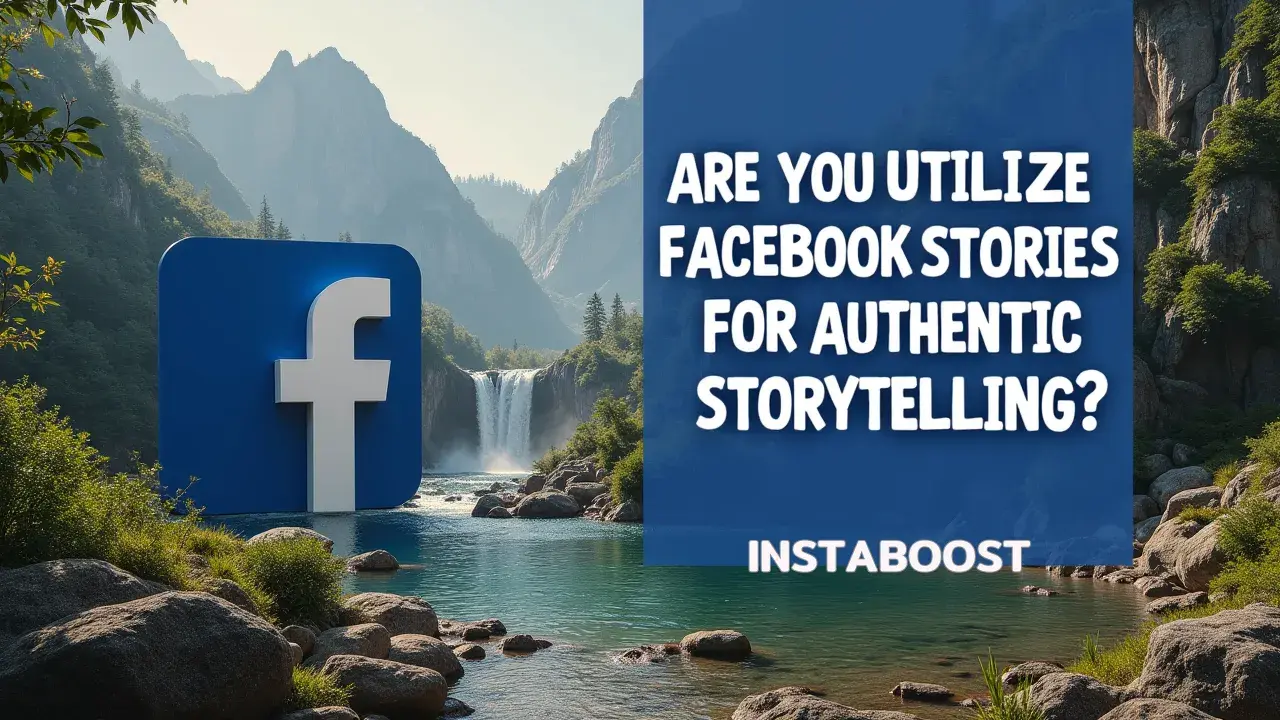Are You Utilizing Facebook Stories for Authentic Storytelling?
Facebook Stories can support more immediate, personal narratives that feel closer to real moments. Compared to a typical newsfeed post, the ephemeral format encourages candid updates and layered sequences that build context and emotion. Results depend on clarity, pacing, and relevance to audience interests, and rushed or overly polished content may dilute authenticity. Thoughtful framing and consistent cadence help Stories deepen engagement and reveal what resonates.
Rethinking Facebook Stories: Beyond Fleeting Moments
A lot of people see Facebook Stories as the kind of thing you scroll past without thinking much – maybe it’s a snapshot of someone’s coffee or a quick joke that’s gone by tomorrow. But there’s something about how Stories work that changes how people use them.
Because they disappear so quickly, people tend to be less careful and more real, and you notice this difference compared to the posts that stay on someone’s profile. Stories show the parts of life that don’t always get shared – the messy desk, the moment right before a meeting, a quick reaction to something that happened that day.
Because they disappear so quickly, people tend to be less careful and more real, and you notice this difference compared to the posts that stay on someone’s profile. Stories show the parts of life that don’t always get shared – the messy desk, the moment right before a meeting, a quick reaction to something that happened that day.
For brands, this is a chance to share what really matters to them in these everyday details, instead of focusing on big statements or polished images. With all the new tools Facebook is adding, and the way the platform tries to show people things they’re likely to care about, Stories become a place to see how short, personal updates might actually connect better. It’s not about pushing a message, but more about letting people in on what’s actually happening, even in small ways.
And with so many people caring more about privacy and finding things that actually feel like they’re meant for them, this kind of sharing stands out, in a way that regular ads can’t quite manage. Honestly, it sometimes feels like these details are just as important as everything for Facebook success that’s usually talked about.

Why Facebook Stories Deserve a Closer Look
I didn’t suddenly become more insightful – I just started paying more attention. When I quit brushing off Facebook Stories as noise and took the time to actually watch them, I noticed something different. They show moments that aren’t polished or planned out, the kinds of things you miss in regular posts or those tidy Instagram grids. With Stories, people and brands drop some of the usual polish, even if it’s only for twenty-four hours. There’s a kind of honesty in those quick, everyday updates – it’s less about drawing attention for its own sake and more about being willing to let the routine parts of your life or business show through.
What I didn’t expect was how people engaged. Folks weren’t just watching; they were replying, reacting, having real conversations through direct messages. The fact that Stories disappear after a day seems to make it easier for people to be casual, since there’s less pressure to be flawless or impressive. If you’re working in marketing or managing a brand’s online presence, using Facebook Stories this way signals you actually understand what draws people in on these platforms. It turns out, building trust sometimes happens in these small, temporary ways – one Story at a time. I guess it’s similar to the way page follower growth on Facebook can be less about numbers and more about those genuine interactions that accumulate over time. In a world where everything else feels so calculated, showing something real, even briefly, gets noticed. That’s probably why brands like INSTABOOST are paying close attention to Stories now – because credibility has a lot to do with what feels genuine in the moment, not with what lasts the longest.
Strategy: Stories as a Living Narrative Framework
Optimization is one thing, but strategy is something different – more about how you look at the whole picture. If you only use Facebook Stories for quick updates, you’re missing out on what they can really offer. Stories actually let you build something over time, not just put up highlights. When you look at Stories as a way to connect the pieces – maybe it’s a product launch, a day-to-day peek behind the curtain, or just checking in with people – there’s a lot more you can do. It’s not only about chasing the most taps or views right now. Someone thinking about the longer game might ask, which updates, over weeks or even longer, will get people to start trusting you or wanting to see what’s next?
That’s where storytelling comes in, and it doesn’t have to be complicated. Each Story can be a simple piece of something bigger, like sharing a sketch from your notebook one day and explaining your thinking another time – breadcrumbs that give people a reason to stick around. The aim isn’t to flood your feed but to make each post feel like it’s part of an ongoing thing.
Some brands, like INSTABOOST, do this well by using Stories to actually talk to people and show there’s a real person involved, and sometimes even increase visibility through likes along the way. And as Facebook brings in new things like predictive interest modeling, being able to keep up a real, ongoing conversation matters even more. What you put in a Story today isn’t just a quick update; it’s another bit of how you build things with the people paying attention – so it’s worth slowing down and thinking about where it could lead.
Resisting the Pressure to Constantly Perform
It’s easy to feel like you have to keep up, always posting and sharing on Facebook because that’s how the platform is set up. The sense that you need to fill every Story slot can start to feel like one more daily task. But when you stop and think about it, there’s nothing wrong with stepping back for a bit.
Skipping a day or not sharing every moment doesn’t mean you’re missing out – it can actually help you see what’s really worth putting out there. When you give your audience a little room, they’re more likely to notice what you do share. The updates don’t all run together, and people can actually remember what caught their eye. Sometimes, get consistent video engagement just comes from being more thoughtful about what you post, instead of trying to outpace the algorithm.
You’ll see brands like INSTABOOST using this kind of approach, where they focus on moments that matter instead of filling up timelines with every bit of news. One or two Stories that actually mean something tend to stick around in people’s minds, while the rest fade out. Facebook will always encourage you to stay active, but if you care about connecting in a real way, slowing down sometimes makes a bigger difference than trying to keep up with everyone else. When you only share what you care about, you build something quieter and steadier – a kind of trust that doesn’t happen when you’re always on. And maybe those are the Stories that people remember, even after the rest are gone.















